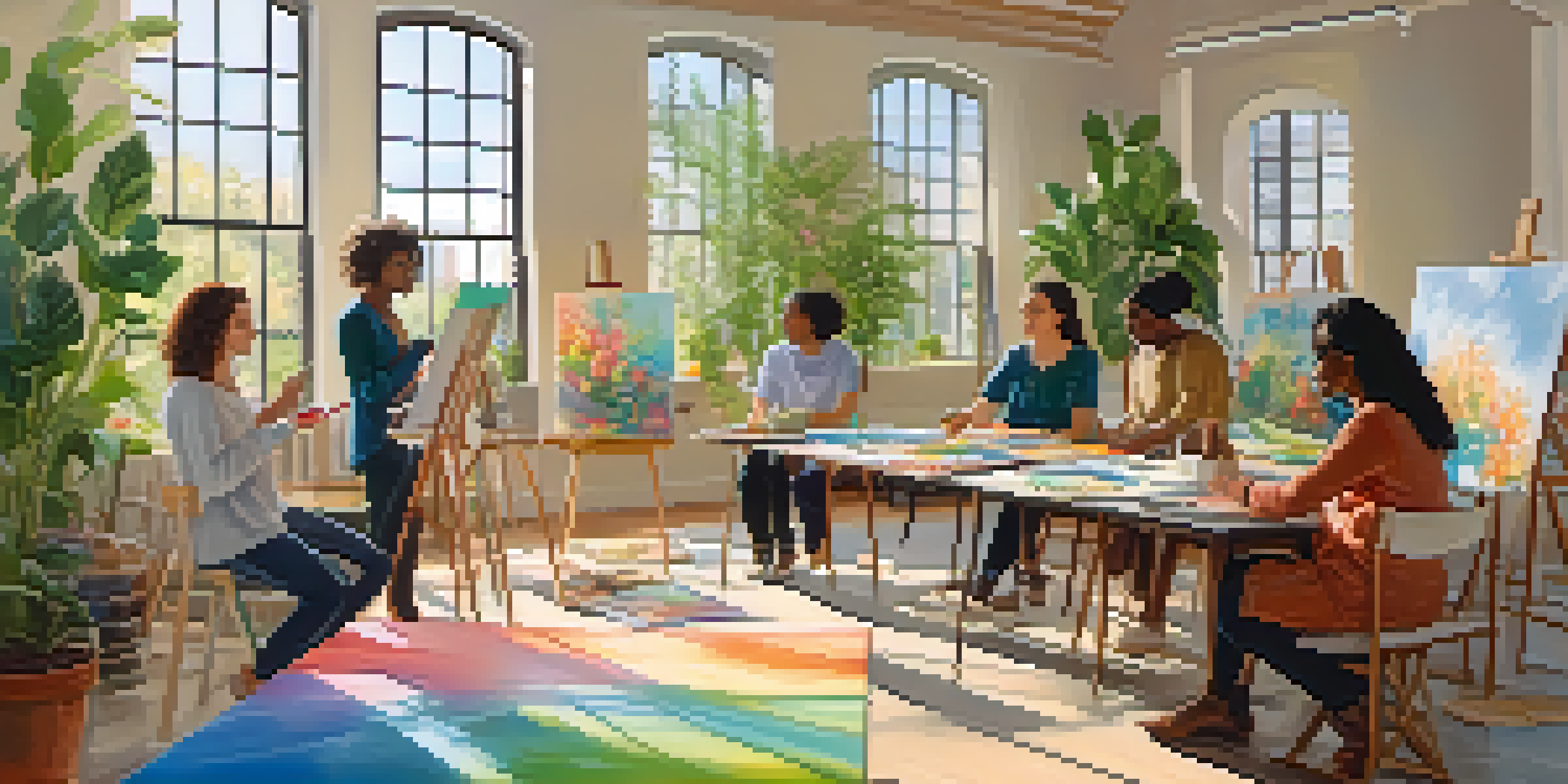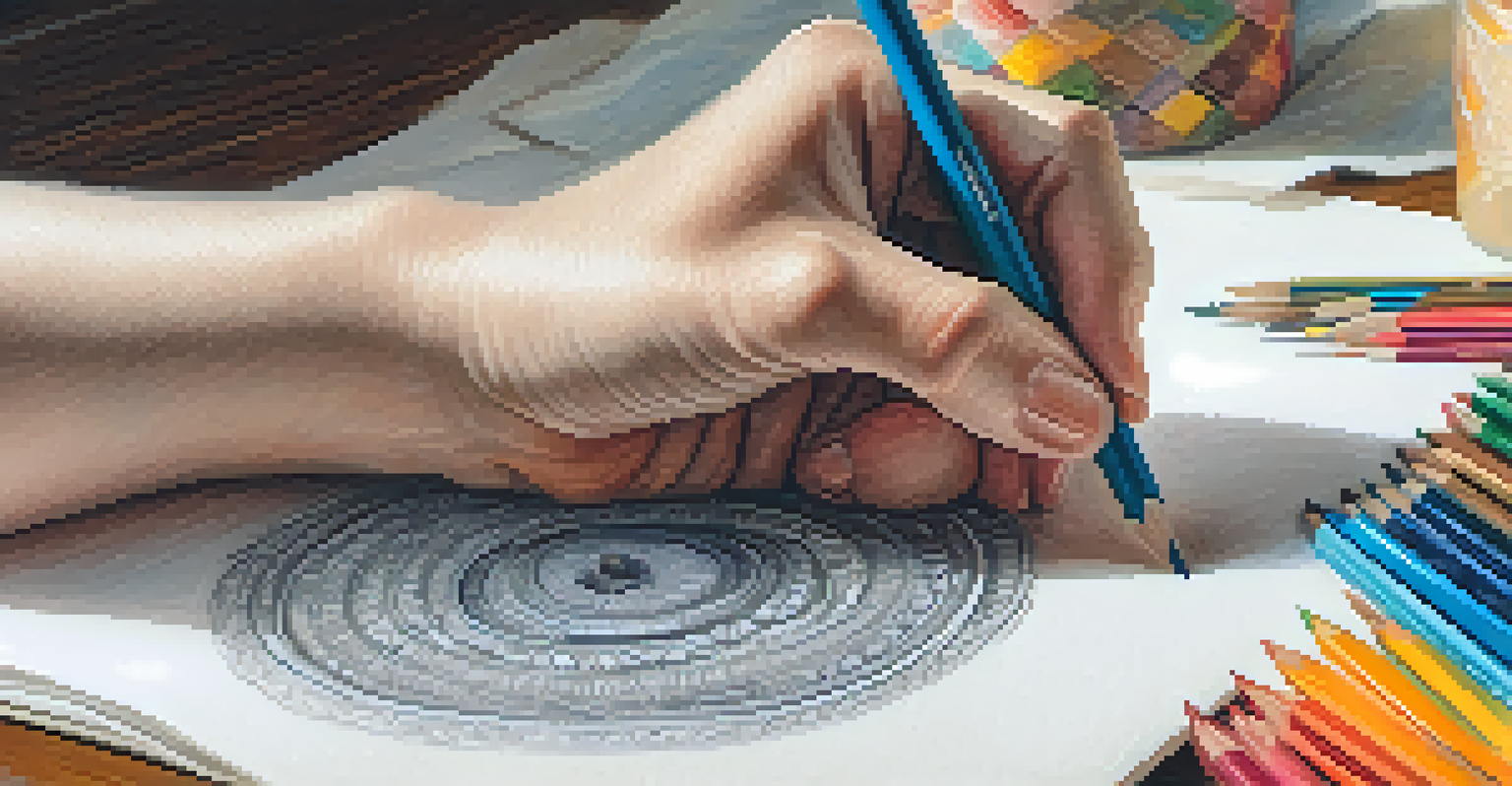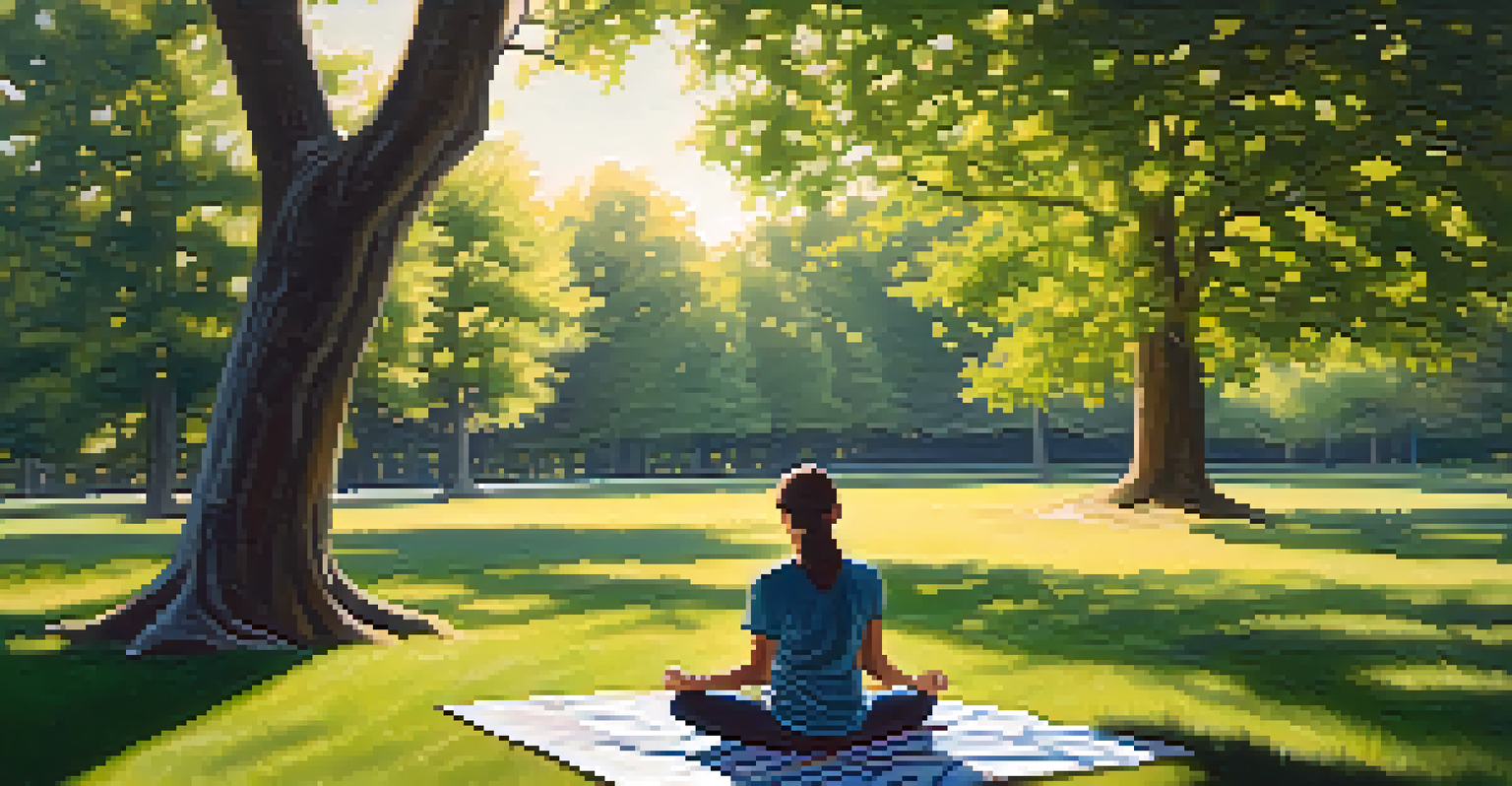Art and Mindfulness: A Dual Approach to Healing

Understanding Art as a Healing Tool
Art has been a form of expression for centuries, and its therapeutic benefits are well-documented. Engaging in creative activities can serve as an emotional release, allowing individuals to process feelings that may be difficult to articulate. For example, painting or drawing can help someone convey their emotions visually, often leading to moments of clarity and insight.
Art enables us to find ourselves and lose ourselves at the same time.
The beauty of art therapy lies in its accessibility; you don’t need to be a professional artist to benefit from it. Simple activities like doodling or coloring can stimulate relaxation and reduce anxiety. When people immerse themselves in art, they often enter a state of flow, where time seems to stand still and worries fade away.
Moreover, art encourages self-reflection and personal growth. By creating something tangible, individuals can explore their inner worlds and confront issues that may have been buried. This process can be profoundly healing, enabling people to gain a deeper understanding of their emotions and experiences.
The Power of Mindfulness in Healing
Mindfulness, the practice of being present in the moment, has gained popularity in recent years due to its mental health benefits. By focusing on the here and now, individuals can reduce stress and anxiety, fostering a sense of calm and clarity. Mindfulness techniques, such as meditation or deep breathing, can help people gain control over their thoughts and emotions.

Incorporating mindfulness into daily life doesn't have to be complex. Simple practices, like mindful walking or eating, can cultivate awareness and appreciation for ordinary moments. This shift in perspective can lead to improved emotional regulation and resilience.
Art as Emotional Expression
Engaging in artistic activities provides a powerful medium for individuals to process and express complex emotions.
Research shows that mindfulness can also enhance creativity, making it a perfect companion to artistic endeavors. When the mind is calm and focused, the creative juices flow more freely, allowing for deeper exploration and expression in art.
How Art and Mindfulness Complement Each Other
When combined, art and mindfulness create a powerful dual approach to healing. Art provides a medium for expression, while mindfulness cultivates a space for reflection. Together, they encourage individuals to explore their feelings and thoughts without judgment, fostering a sense of acceptance and understanding.
Mindfulness isn't difficult, we just need to remember to do it.
For instance, participating in a mindful art session—where one focuses on the process of creating rather than the end product—can enhance the therapeutic experience. This approach allows individuals to immerse themselves fully in the moment, alleviating pressure and unlocking creativity.
This synergy not only aids in emotional healing but also promotes overall well-being. By practicing mindfulness while creating art, individuals may experience reduced stress levels, heightened self-awareness, and improved emotional resilience.
Art Therapy: A Structured Approach
Art therapy is a formal therapeutic practice that combines psychology and artistic expression. Licensed art therapists guide individuals in using creative activities to address psychological challenges and emotional distress. This structured approach enables participants to explore their feelings in a safe and supportive environment.
During art therapy sessions, individuals may engage in various forms of art—such as painting, sculpting, or collage—to convey their thoughts and emotions. The therapist helps facilitate discussions around the artwork, encouraging deeper exploration of underlying issues. This process can lead to profound insights and breakthroughs.
Mindfulness Enhances Creativity
Practicing mindfulness fosters a calm and focused mindset, allowing for deeper exploration and expression in art.
Art therapy has been shown to be effective for a variety of mental health issues, including depression, anxiety, and trauma. By providing a non-verbal outlet for emotions, it allows individuals to process complex feelings that may be difficult to articulate through words alone.
Mindfulness-Based Art Practices
Mindfulness-based art practices blend mindfulness techniques with creative expression, offering a unique way to engage with both art and self-awareness. Activities such as mindful drawing, where one focuses on the sensations of the pencil on paper, encourage deep concentration and presence. Such practices can transform art-making into a meditative experience.
These practices can also include guided imagery or visualization, where individuals are prompted to create mental images before putting them onto canvas. This method not only enhances creativity but also fosters a deeper connection between the mind and the body, promoting relaxation and emotional well-being.
Incorporating mindfulness into artistic pursuits can lead to greater satisfaction and joy in the creative process. By focusing on the act of creation itself, individuals can let go of perfectionism and embrace the beauty of imperfection.
Benefits of Combining Art and Mindfulness
The benefits of integrating art and mindfulness practices extend beyond emotional healing. Together, they can enhance cognitive functioning and promote overall mental clarity. Engaging in creative activities while practicing mindfulness can stimulate brain regions associated with innovation and problem-solving.
Furthermore, this dual approach encourages social connection. Group art therapy sessions or mindful art workshops allow individuals to share their experiences, fostering a sense of community and support. This social aspect can be incredibly beneficial for those feeling isolated or alone in their struggles.
Synergy of Art and Mindfulness
Combining art and mindfulness creates a holistic approach to healing, promoting self-awareness and emotional resilience.
Ultimately, the combination of art and mindfulness can lead to a more balanced and fulfilling life. By embracing both practices, individuals can cultivate a deeper connection to themselves and the world around them.
Getting Started with Art and Mindfulness
If you're interested in exploring the healing potential of art and mindfulness, getting started is easier than you might think. Begin by setting aside time for a simple creative activity—grab some colored pencils, paints, or even a sketchbook, and allow yourself to create without judgment. Remember, it’s about the process, not the final product.
Incorporate mindfulness by focusing on your breath and being present as you create. Notice the colors, textures, and sensations involved in the process. This can transform your art-making experience into a mindful practice, enhancing both relaxation and creativity.

You might also consider joining a local art class or workshop that emphasizes mindfulness, or even exploring online resources that guide you through mindful art exercises. The most important step is to be open to the process and allow yourself to experience the healing benefits that both art and mindfulness can offer.